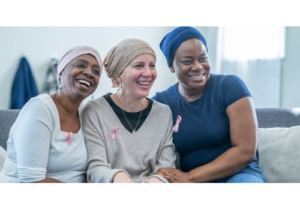Breast Cancer Awareness Month: Screening Should Begin at 40 for Many Women By Stacy M. Brown
Categories: Articles,

According to a recent recommendation statement, the US Preventive Services Task Force proposes that women with an average risk for breast cancer begin screening at age 40 to reduce their risk of death.
It is a change from the 2016 recommendation, in which the task force recommended that biennial mammograms (breast x-rays) begin at age 50 and that the decision for women to screen in their 40s “should be an individual one.”
Some organizations, including the American Cancer Society, have recommended that women begin mammograms in their forties.
USPSTF Vice Chair Dr. Wanda Nicholson, senior associate dean and professor at George Washington University’s Milken Institute School of Public Health, told CNN,
“Our new task force recommendation recommends that women begin breast cancer screening with mammography at age 40 and continue screening every other year until age 74.”
The USPSTF, a group of independent medical experts whose recommendations help steer doctors’ decisions and influence insurance plans, proposed an update to its breast cancer screening recommendations.
According to Nicholson, women with dense breasts and a family history of cancer typically fall into this category, but not women whose family history contains breast cancer or genetic mutations, such as mutations on the BRCA gene, as they are regarded as being at high risk.
The revisions would not apply to those with an increased risk of breast cancer who may have already been advised to undergo screening at age 40 or earlier.
However, they should adhere to the monitoring procedures recommended by their physicians.
Black women reportedly have the highest incidence of breast cancer-related deaths in America.
Nicholson stated that the revised recommendation “will save more lives among all women.”
This is especially significant for Black women, who have a 40% higher risk of breast cancer-related death.
According to the JAMA Network Open, the breast cancer death rate among women in their 40s was 27 per 100,000 person-years for Black women, compared to 15 per 100,000 for white women and 11 per 100,000 for American Indian, Alaska Native, Hispanic, and Asian or Pacific Islander women.
As a result, researchers recommended that Black women begin screening at an earlier age, 42, as opposed to 50.

Tags
Archive
- August 2025 (26)
- July 2025 (33)
- June 2025 (25)
- May 2025 (36)
- April 2025 (35)
- March 2025 (40)
- February 2025 (42)
- January 2025 (52)
- December 2024 (30)
- November 2024 (44)
- October 2024 (39)
- September 2024 (32)
- August 2024 (24)
- July 2024 (13)
- June 2024 (16)
- May 2024 (7)
- April 2024 (6)
- March 2024 (5)
- February 2024 (29)
- January 2024 (30)
- December 2023 (12)
- November 2023 (11)





